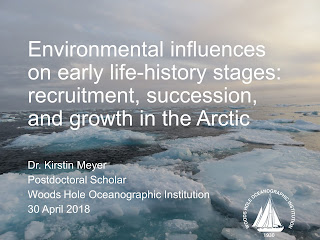The voyage of the Dawn Treader

"Adventures are never fun while you're having them." - C.S. Lewis in The Voyage of the Dawn Treader Carl pushed forward on the throttle and kicked the engine into turbo mode. Instantly, black smoke started billowing out of the exhaust pipe behind us. We let it go for a few seconds, watching the dark plume stretch behind us as we skimmed over the top of the water. The black cloud slowly lightened until it turned to white, then darkened again to gray. We looked at each other, confused. Friends, I write this blog to show you the ups and downs of science, and today happened to be one of the less-successful days. I'm not quite ready to call it a "down," because it was still overall a great day, but we were unable to reach our dive site because of mechanical issues. Sometimes, that's just how it goes. I'm training for a project this summer that involves diving at shipwrecks around Massachusetts, and I'm getting pretty far along in the process. I...





